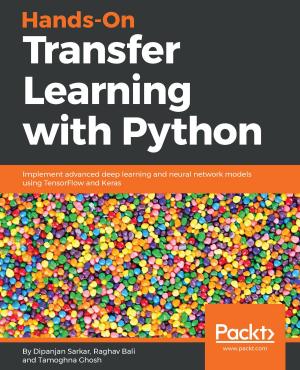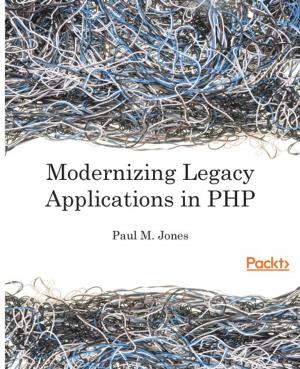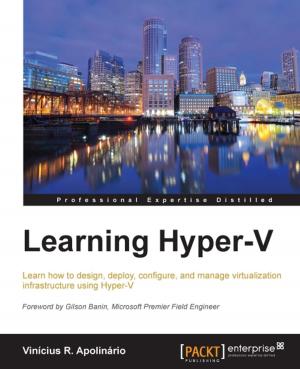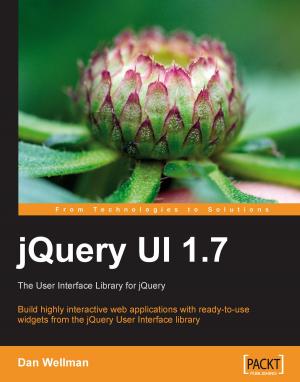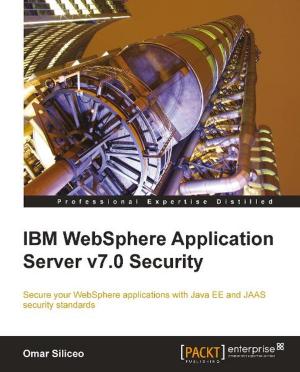Learning Puppet
Nonfiction, Computers, Application Software, Computer Security, Networking & Communications, Programming, Programming Languages| Author: | Jussi Heinonen | ISBN: | 9781784391249 |
| Publisher: | Packt Publishing | Publication: | August 31, 2015 |
| Imprint: | Packt Publishing | Language: | English |
| Author: | Jussi Heinonen |
| ISBN: | 9781784391249 |
| Publisher: | Packt Publishing |
| Publication: | August 31, 2015 |
| Imprint: | Packt Publishing |
| Language: | English |
Build intelligent software stacks with the Puppet configuration management suite
About This Book
- Develop high-quality Puppet modules in an isolated development environment
- Manage complex development environments with industry-leading configuration management tool
- A comprehensive guide to get you started with Puppet development and deployment in virtual environments
Who This Book Is For
If you are new to configuration management and IT automation processes and are looking for better ways to manage system configuration changes at scale, this book is for you. Basic knowledge of Linux System Administration is a prerequisite.
What You Will Learn
- Manage your system with Puppet instantly
- Develop Puppet in an isolated development environment
- Make your manifests reusable to avoid re-inventing the wheel
- Automate monitoring to improve the user experience through increased uptime
- Enable nodes to communicate with each other via Puppet Master
- Make environment configuration dynamic using stored configurations and PuppetDB
- Extend Puppet beyond the built-in functionalities
- Manage your environment through the Puppet Enterprise console
In Detail
Puppet is a cross-platform, open source configuration management utility, which runs on various Unix, Linux, and Windows Microsoft platforms. It allows you to automate all your IT configurations, giving you control of what you do to each node, and also when and how you do it. You’ll be able to build and manage development, test, and production environments independently without requiring previous system administration experience.
Learning Puppet is a step-by-step guide on how to get started with Puppet development and use Puppet modules as the building blocks to deploy production-ready application cluster in virtual environment.
You will begin with the installation of development environment on the VirtualBox hypervisor and Puppet Learning VM that will be used as the platform for testing and development of Puppet modules. Next, you will learn how to manage virtual machines and snapshots effectively and enhance the development experience with advanced VirtualBox features.
Later the book will focus on Puppet module development in detail. You will be guided through the process of utilizing existing modules that are available in the public module repository, write your own modules and use them to deploy a real-world web application that includes features such as monitoring and load balancing. You will then learn to scale your environment and turn your static configuration into a dynamic one through stored configurations and PuppetDB. Finally, the book will provide you with practical advice on Puppet troubleshooting and managing your environment with the wealth of features provided by the Puppet Enterprise console.
Style and approach
A comprehensive introductory guide to help you manage your infrastructure with Puppet. All instructions and explanations are supported with screenshots and code examples to ensure you get an easy start with Puppet.
Build intelligent software stacks with the Puppet configuration management suite
About This Book
- Develop high-quality Puppet modules in an isolated development environment
- Manage complex development environments with industry-leading configuration management tool
- A comprehensive guide to get you started with Puppet development and deployment in virtual environments
Who This Book Is For
If you are new to configuration management and IT automation processes and are looking for better ways to manage system configuration changes at scale, this book is for you. Basic knowledge of Linux System Administration is a prerequisite.
What You Will Learn
- Manage your system with Puppet instantly
- Develop Puppet in an isolated development environment
- Make your manifests reusable to avoid re-inventing the wheel
- Automate monitoring to improve the user experience through increased uptime
- Enable nodes to communicate with each other via Puppet Master
- Make environment configuration dynamic using stored configurations and PuppetDB
- Extend Puppet beyond the built-in functionalities
- Manage your environment through the Puppet Enterprise console
In Detail
Puppet is a cross-platform, open source configuration management utility, which runs on various Unix, Linux, and Windows Microsoft platforms. It allows you to automate all your IT configurations, giving you control of what you do to each node, and also when and how you do it. You’ll be able to build and manage development, test, and production environments independently without requiring previous system administration experience.
Learning Puppet is a step-by-step guide on how to get started with Puppet development and use Puppet modules as the building blocks to deploy production-ready application cluster in virtual environment.
You will begin with the installation of development environment on the VirtualBox hypervisor and Puppet Learning VM that will be used as the platform for testing and development of Puppet modules. Next, you will learn how to manage virtual machines and snapshots effectively and enhance the development experience with advanced VirtualBox features.
Later the book will focus on Puppet module development in detail. You will be guided through the process of utilizing existing modules that are available in the public module repository, write your own modules and use them to deploy a real-world web application that includes features such as monitoring and load balancing. You will then learn to scale your environment and turn your static configuration into a dynamic one through stored configurations and PuppetDB. Finally, the book will provide you with practical advice on Puppet troubleshooting and managing your environment with the wealth of features provided by the Puppet Enterprise console.
Style and approach
A comprehensive introductory guide to help you manage your infrastructure with Puppet. All instructions and explanations are supported with screenshots and code examples to ensure you get an easy start with Puppet.

